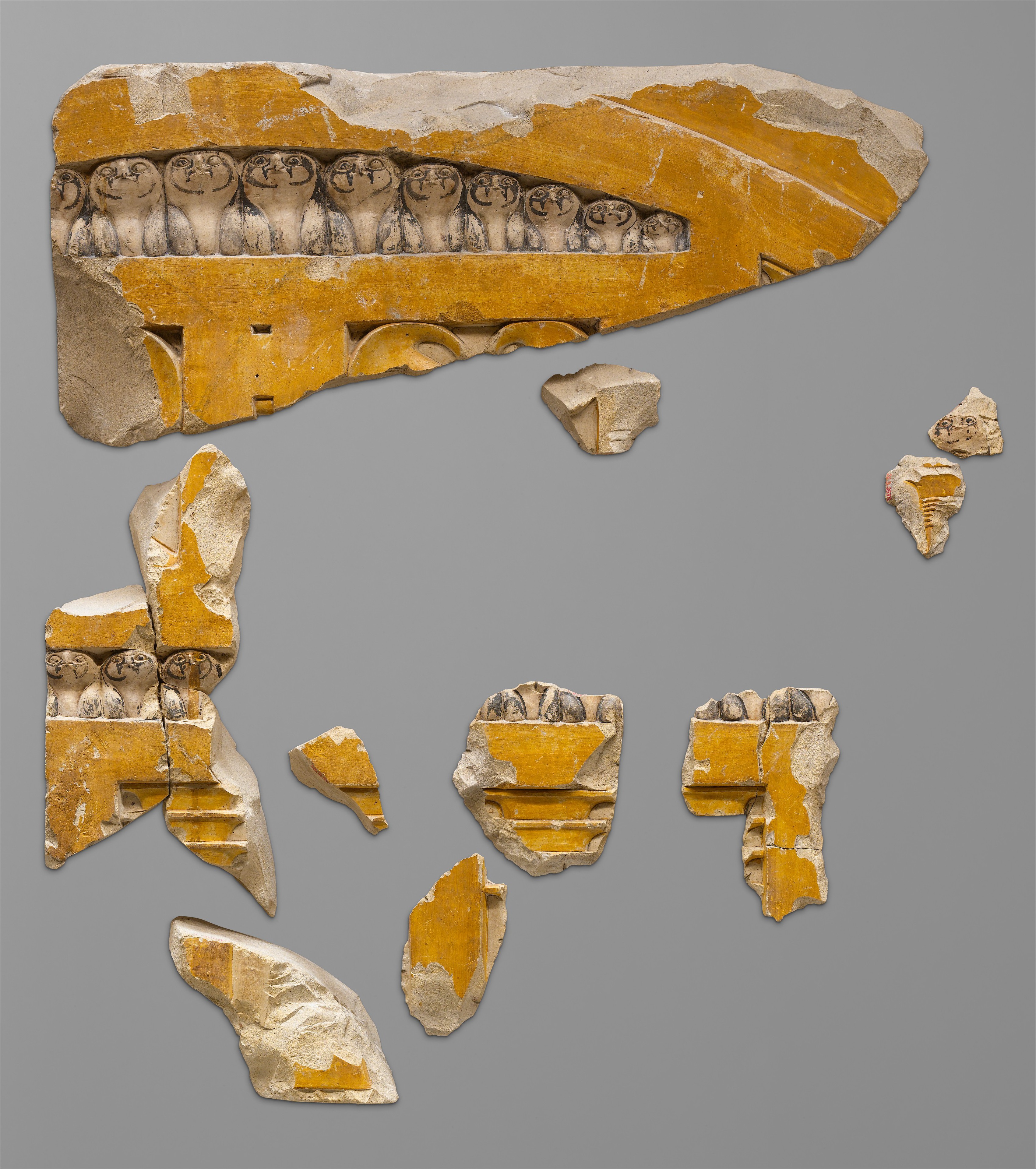Relief fragments from an elaborate false doorway
Middle Kingdom
Neferu was most likely the first queen of Nebhepetre Mentuhotep II, and may also have been his sister. Her plundered tomb, excavated by the Metropolitan Museum of Art between 1923 and 1931, lay outside the king's temple precinct at Deir el Bahri. It was visited as a shrine in the Eighteenth Dynasty, and at some point it was used as a quarry for the fine limestone covering the walls.
The decoration of the funerary apartments consisted almost exclusively of ritual scenes and depictions of sacred objects deriving from local Upper Egyptian iconography. The carving of Neferu’s surviving reliefs has a captivating otherworldliness, although it is varied in quality. The extenuated proportions of the figures, and the elaborate patterns contrasting with smooth planes, represent the height of the Eleventh Dynasty archaic style. The background was left unpainted, while the figures were either detailed or covered with orange, pink, purple, blue, green, white or black paint.
This group of fragments complements a scene showing attendants of the queen moving from left to right (see 26.3.353-1). The movement of attendants in two directions reflects the fact that figures of attendants were shown on the two long walls of the entrance passage moving from the door to the interior of the tomb, where the queen would have been placed to receive them. The fragments in this group must come from the right-hand wall. In the bottom register, fattened bulls are led toward the queen; they are being slaughtered in the register above for a meat offering.
For other reliefs from the tomb of Neferu, see 31.3.1 and 26.3.353*.
Due to rights restrictions, this image cannot be enlarged, viewed at full screen, or downloaded.
This artwork is meant to be viewed from right to left. Scroll left to view more.



